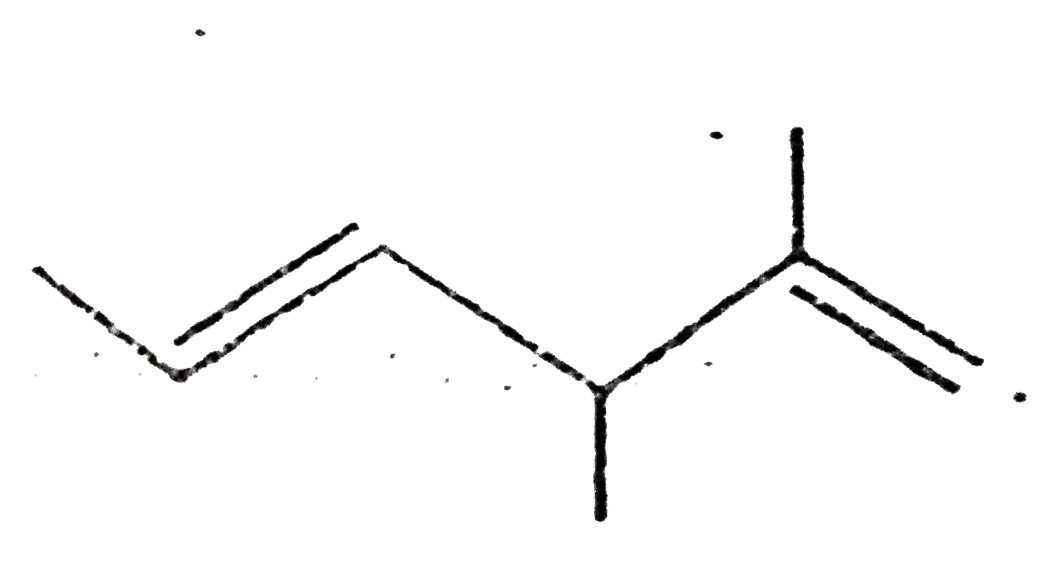In acid catalysed hydration of alkenes, reaction intermediate formed is
Free radical
Carbocation
Carbanion
Carbene
The correct Answer is:B
To solve the question regarding the reaction intermediate formed in acid-catalyzed hydration of alkenes, we can follow these steps:
1. Identify the Reaction:
The reaction in question is the acid-catalyzed hydration of alkenes. This process involves the addition of water (H₂O) across the double bond of an alkene in the presence of an acid.
2. Understand the Role of the Acid:
The acid (often H₂SO₄ or HCl) donates a proton (H⁺) to the alkene. This protonation of the alkene leads to the formation of a more stable carbocation intermediate.
3. Formation of the Carbocation:
When the alkene (e.g., ethene) is protonated, one of the carbon atoms of the double bond becomes positively charged. This occurs because the double bond breaks and one of the carbons forms a bond with the H⁺ ion, resulting in a carbocation. The other carbon now has a positive charge due to the loss of the double bond.
4. Nucleophilic Attack by Water:
The next step involves water (acting as a nucleophile) attacking the positively charged carbon of the carbocation. This leads to the formation of an alcohol.
5. Final Product:
After the nucleophilic attack, the final product is formed, which is an alcohol. In the case of ethene, the product would be ethanol.
Conclusion:
The reaction intermediate formed in the acid-catalyzed hydration of alkenes is a carbocation.
---
The reaction in question is the acid-catalyzed hydration of alkenes. This process involves the addition of water (H₂O) across the double bond of an alkene in the presence of an acid.
The acid (often H₂SO₄ or HCl) donates a proton (H⁺) to the alkene. This protonation of the alkene leads to the formation of a more stable carbocation intermediate.
When the alkene (e.g., ethene) is protonated, one of the carbon atoms of the double bond becomes positively charged. This occurs because the double bond breaks and one of the carbons forms a bond with the H⁺ ion, resulting in a carbocation. The other carbon now has a positive charge due to the loss of the double bond.
The next step involves water (acting as a nucleophile) attacking the positively charged carbon of the carbocation. This leads to the formation of an alcohol.
After the nucleophilic attack, the final product is formed, which is an alcohol. In the case of ethene, the product would be ethanol.
The reaction intermediate formed in the acid-catalyzed hydration of alkenes is a carbocation.
Topper's Solved these Questions
Similar Questions
In the acid catalyzed dehydration of alcohols to alkenes, the intermediate species formed is
View SolutionAcid catalyzed hydration of alkenes except ethene leads to the formation of
View SolutionAcid catalysed dehydration of 2-pentanol would give
View SolutionExplain the mechanism of the following reactions :
Acid catalysed dehydration of an alcohol forming an alkene.
View SolutionReaction intermediate of EicB reaction is :
View SolutionStatement-1: Acid catalyzed hydration of (1) involves rearrangement

and
Statement-2 The formed intermediate has potential for rearrangement.
View SolutionA: Reaction of carboxylic acid with hydrazoic acid in the presence of conc. H2SO4 to form primary amine is called Schmidt reaction.
R: In this reaction isocyanate intermediate is formed.
View SolutionEnzymes catalyse reactions by
View SolutionIn the avove reaction the intermediate species are :

View SolutionWhich of the following alkene in acid catalysed hydration form 2−methyl propan −2−ol ?
View Solution
